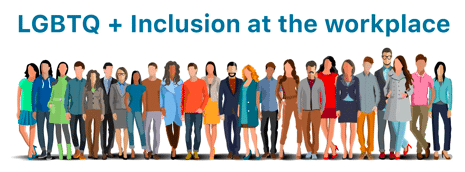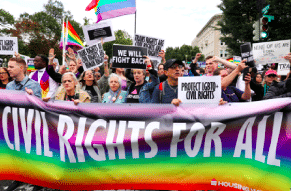The sexual orientation or gender identity should not affect how a company employs, treats fairly, or ends a prospective employee in Canada. Whether an individual identifies as a lesbian, gay, bisexual, or transgender does not affect their capacity to execute a job.
Discrimination against LGBTQ is illegal in Canada. The Canadian Human Rights Act bans gender discrimination, sexual orientation, sexual identity, and gender expression in all phases of work. This means that an employer cannot discriminate against you concerning recruitment, firing, salary, employment jobs, promotions, layoffs, training, and margin benefits if an employee belongs to the LGBTQ+ community.
If you belong to the LGBTQ+ community and are facing discrimination at your workplace, we urge you to one of the best labour lawyer in Hamilton to see how they can assist. You may have the right to compensation for the discrimination meted out against you. De Bousquet PC will assess your allegations, explain the laws on discrimination along with your legal alternatives, and lay out a detailed plan to achieve the justice you deserve.
What are Some Instances of LGBTQ+ Discrimination in the Workplace?
Employers discriminate against people belonging to the LGBTQ+ community by:
- Denial of a job, promotion, increase or reward for a person based on sexual orientation or gender identity.
- Preventing a person from accessing work resources for other staff based on an actual or perceived sexual orientation or gender identity.
- Denying a person access to training programs based on an actual or perceived sexual orientation or gender identity.
- Harassing or repressing an employee who makes a complaint (or who assists another person to submit a complaint) of sexual or gender discrimination.
- To commit or sanction continued discriminatory behavior that creates a hostile work environment for workers.
What are the Legal Safeguards in Canada Against LGBTQ+ Discrimination in the Workplace?
In 1996 the Canadian Human Rights Act was modified, and sexual orientation discrimination was made one of the unlawful discrimination methods. It was a clear statement by Parliament, which said that gay, lesbian, and bisexual Canadians are entitled to “an opportunity equal with other individuals to make for themselves the lives they are able and wish to have.”[1] The Canadian Commission on Human Rights, which oversees the law’s implementation, provides further information on human rights and sexual orientation. All complaints, progress, and other actions are reflected in the yearly reports of the Commission.
Under Section 15 of the Canadian Charter of Rights and Freedoms, every person is regarded as equal regardless of religion, ethnicity, national or ethnic origin, color, gender, age, or mental or physical handicap. The Supreme Court of Canada ruled in Egan v. Canada[2] that although “sexual orientation” is not mentioned in Section 15(1) of the Charter for the reasons of discrimination, it forms the comparable basis upon which the discrimination claims can be founded. In Vriend v. Alberta, the Court ruled that the provincial human rights law, which excluded sexual orientation, violated Section 15 (1).[3]
The Civil Marriage Act passed in 2005 represented a milestone for equal rights for sexual orientation by enabling same-sex couples to marry throughout Canada. In 2000, Parliament adopted Bill C-23, which provides same-sex couples with the same social and fiscal advantages as heterosexuals in common-law partnerships.
Most provinces and territories in Canada have made discrimination based on sexual orientation illegal in their human rights law. For example:
- Alberta – Alberta Commission on Human Rights.
- British Columbia – Minister of Justice – Protection of Human Rights.
- Manitoba – Manitoba Commission on Human Rights.
- Ontario – Ontario Commission on Human Rights.

What steps should you take before suing the employer on grounds of discrimination?
In the event you are being discriminated against based on your sexual orientation, you need to take these steps first before filing a lawsuit against your employer for discrimination, harassment, or creating a hostile working environment. It will ensure that you have a strong chance of coming out with the desired outcome.
- Put it on paper: Please keep everything in writing if you tell a supervisor, management officer, or the HR department about the prejudice. If you submit a claim for discrimination that ends in court, you will need proof of your allegation. You will have to show that there has been prejudice.
- Bring witnesses: Identify colleagues who have experienced or witnessed that discrimination and who would be prepared to provide evidence on your behalf if you have been a target of the LGBT prejudice in your workplace.
- Pursue one step at a time: Many Canadian businesses have their internal procedures to deal with discrimination allegations, try pursuing those options to get the desired action.
The LGBTQ+ discrimination lawyers at De Bosquet PC address all instances of discrimination in Canadian workplaces urgently. For a free, private consultation, please get in touch with us.
[1] Section 2.
[2] [1995] 2 S.C.R. 513.
[3] [1998] 1 S.C.R. 493.




